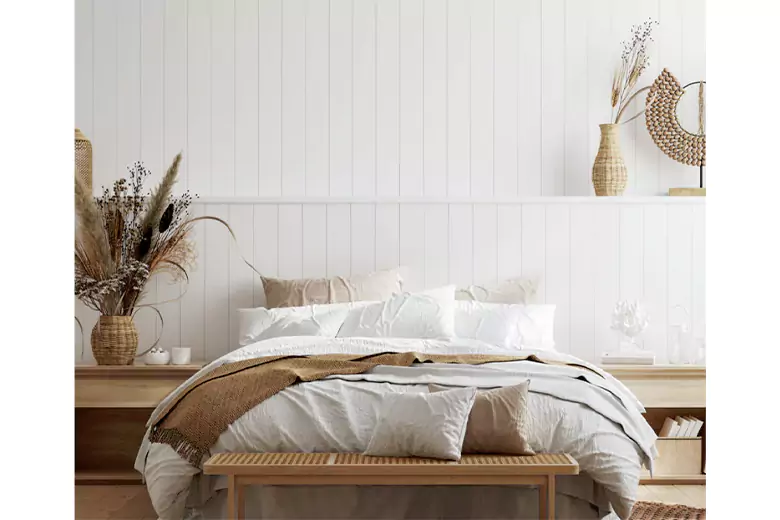The idea of designing your own bedroom furniture might seem daunting at first, conjuring images of complex woodworking and specialized tools. However, with a little creativity, planning, and access to the right resources, you can craft unique pieces that perfectly reflect your personal style and spatial needs. Designing your own bedroom furniture allows for unparalleled customization, ensuring every detail aligns with your vision, from the dimensions of a nightstand to the finish of a headboard. Forget generic store-bought items; embrace the opportunity to create a sanctuary tailored specifically for you, reflecting both your functional requirements and aesthetic preferences. This endeavor is truly a journey of self-expression and practical innovation.
Why Design Your Own Bedroom Furniture?
- Unparalleled Customization: Get exactly what you want, down to the smallest detail. No more settling for near-perfect.
- Space Optimization: Design furniture that perfectly fits your room’s dimensions, maximizing available space.
- Unique Style: Express your personal taste and create a bedroom that truly reflects your individuality.
- Cost Savings (Potentially): Depending on materials and complexity, DIY furniture can sometimes be more affordable than high-end store purchases.
- Sense of Accomplishment: The satisfaction of building something yourself is incredibly rewarding.
Getting Started: Planning and Design
Before you pick up a hammer or saw, careful planning is crucial. Consider these steps:
1. Define Your Needs and Style
- Inventory: What furniture do you currently need (bed, nightstands, dresser, etc.)?
- Measurements: Accurately measure your bedroom space, paying attention to window and door placement.
- Style Research: Browse magazines, websites, and furniture stores to identify your desired aesthetic (modern, rustic, minimalist, etc.). Create a mood board.
- Budget: Determine how much you’re willing to spend on materials and tools.
2. Create a Design
You don’t need to be a professional designer, but sketching out your ideas is essential.
- Hand Sketches: Simple drawings can help visualize your furniture pieces.
- Online Design Tools: Software like SketchUp or Sweet Home 3D can create 3D models.
- Consider Ergonomics: Ensure your furniture is comfortable and functional. Think about the height of your nightstand relative to your bed, for example.
Choosing Materials and Tools
The materials you choose will greatly impact the look and durability of your furniture.
- Wood: Pine, oak, maple, and plywood are common choices. Consider the grain, color, and durability of each.
- Hardware: Select appropriate hinges, knobs, pulls, and fasteners.
- Finishes: Choose stains, paints, or sealants to protect and enhance the wood’s appearance.
You’ll also need basic woodworking tools, such as a saw, drill, sander, measuring tape, and safety equipment. Consider renting specialized tools if you only need them for this project.
Construction and Assembly
Follow your design plans carefully and take your time. Accuracy is key to a successful outcome.
- Cut Accurately: Precise cuts are essential for a professional-looking finish.
- Assemble Securely: Use appropriate joinery techniques (screws, dowels, glue) to ensure structural integrity.
- Sand Smoothly: Sand all surfaces before applying finishes.
- Apply Finishes Evenly: Follow the manufacturer’s instructions for stains, paints, and sealants.
Comparative Table: Wood Options for Bedroom Furniture
| Wood Type | Pros | Cons | Typical Use |
|---|---|---|---|
| Pine | Affordable, easy to work with | Soft, prone to dents and scratches | Bed frames, drawers |
| Oak | Strong, durable, attractive grain | More expensive than pine, harder to work with | Dressers, headboards |
| Maple | Very strong, smooth surface, takes paint well | Expensive, can be difficult to stain evenly | Nightstands, desks |
| Plywood | Stable, affordable, available in large sheets | Edges need covering, can look less refined | Drawer bottoms, cabinet backs |
Designing your own bedroom furniture is a rewarding project that allows you to create pieces that are perfectly tailored to your needs and style. With careful planning, the right tools, and a bit of patience, you can transform your bedroom into a personalized sanctuary. Remember to prioritize safety and accuracy throughout the process. Hopefully, after reading this guide, the notion of designing your own bedroom furniture seems less intimidating and more of an attainable and exciting creative endeavor. Good luck!

